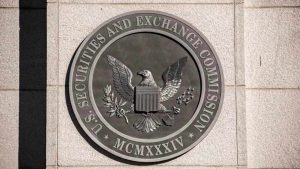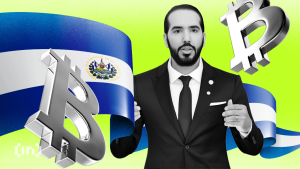Crypto regulators lagging behind blockchain industry

As if he didn’t have enough to do, Gary Gensler appeared before the European Parliament on Sept. 1 to share his policy recommendations regarding the regulation of crypto assets and other matters. While the United States Securities and Exchange Commission Chair made clear that he was presenting his own views — not those of the Commission — his (virtual) appearance necessarily raised questions.
Does Gensler, regarded by some as America’s most crypto-savvy regulator, believe that cryptocurrency and blockchain policy has to be harmonized globally? If so, can he make common cause with the Europeans — or do the U.S. and the European Union have different priorities? More generally, are globally harmonized regulations even feasible, particularly in areas such as decentralized finance?
The questions didn’t end when the New York Times made cryptocurrency the lead story in its Sunday, Sept. 5 edition, observing that “the boom in companies offering cryptocurrency loans and high-yield deposit accounts is disrupting the banking industry and leaving regulators scrambling to catch up.”
It all begs the question: Wherefore the regulators?
“I think it is very telling to have the SEC chief over in the EU Parliament in the midst of the recent surge in cryptos,” Pablo Agnese, lecturer in the department of economy and business organization at the Universitat Internacional de Catalunya Barcelona, told Cointelegraph, adding, “Not only are they [i.e., regulators] playing a catch-up game, they are also trying to reach a political consensus, at least in the U.S.–EU relationship.”
Patrick Hansen, until recently head of blockchain at Bitkom — an association of German companies in the digital economy — opined that Gensler is undoubtedly aware of how decentralized and global the crypto community is, telling Cointelegraph, “With DeFi projects coming primarily out of the U.S. and Europe, he probably wants to ensure that both regions align on these issues in order to prevent regulatory arbitrage.”
A growing realization
“I’m not convinced that the recent high-profile meetings between U.S. regulators and their European counterparts represent a policy shift,” Geoffrey Goodell, a research associate at University College London and deputy executive director of the UCL Centre for Blockchain Technologies, told Cointelegraph. He added:
“There is a growing realization on both sides of the Atlantic that digital currencies are here to stay and could potentially introduce systemic risk, not only to investors searching for new sources of uncorrelated returns but also to monetary sovereignty.”
In his remarks before the EU parliament’s Committee on Economic and Monetary Affairs, Gensler noted that “this $2.1-trillion asset class is truly global. It has no borders or boundaries. It operates 24 hours a day, seven days a week.”
While affirming that he was “technology-neutral,” Gensler emphasized that “I am anything but public policy-neutral.” A sound public policy entails protecting consumers, curtailing illicit activity, and ensuring financial stability, he said, adding, “For those who want to encourage innovations in crypto, I’d like to note that financial innovations throughout history don’t long thrive outside of public policy frameworks.”
U.S. and Europe: Different concerns?
Still, crypto regulatory harmonization requires some agreement around the goals. Do European policymakers have different priorities from Americans? For example, Europeans might be more worried about the environmental harm caused by Bitcoin (BTC) mining while U.S. policymakers could be more focused on whether stablecoins are truly stable.
“Environmental damage is definitely a bigger concern in the EU, especially the EU Parliament,” where some political groups like the Greens want to ban proof-of-work consensus protocols, noted Hansen. As for stablecoins, most are denominated in U.S. dollars, so this is understandably an American preoccupation, he added, but they could become a concern for the EU if all decentralized finance (DeFi) activity becomes USD denominated.
Agnese sees the environmental issue as a bit of a red herring — possibly even a way to denigrate the technology by its detractors — and he referenced a May 2021 Galaxy Digital report that claims the Bitcoin network uses less than half the energy employed by both the banking system and the gold industry, “arguably the two closest competitors if we think of cryptos as a potential media of exchange,” he told Cointelegraph.
Surely, though, U.S. and European policymakers share mutual interests with regard to crypto, like ensuring Know Your Customer (KYC) and Anti-Money Laundering (AML) procedures are universally adhered to. “The most important short-term common ground has to be the regulatory standards for centralized crypto custodians, exchanges, brokers, etc. on the matters of KYC, AML, taxation and consumer protection,” said Hansen.
Stablecoins are also a valid area of common concern in Agnese’s view, “as many such cryptos, which are pegged to major currencies like the USD, have not been audited or, when they have, they have left many questions still unanswered.”
In his Sept. 1 remarks, Gensler noted that “nearly three-quarters of trading on all crypto trading platforms occurred between a stablecoin and some other token” in July, and he suggested that stablecoins could be facilitating those seeking to sidestep financial regulations, including AML and sanctions rules. “European regulators are certainly aware of the counterparty risk intrinsic to stablecoins,” noted Goodell, adding:
“When a private-sector stablecoin issuer fails to fulfill its promise to maintain a peg, would the European Central Bank bail out holders of stablecoins? If the answer is definitely yes, then the issuer is effectively doing the central bank’s job by creating a central bank digital currency on its behalf. If the answer is possibly no, then the stablecoin isn’t so stable and should trade at a discount.”
Goodell disputed the notion, however, that U.S. regulators are necessarily late to the game with regard to crypto assets. “I think the full story is more nuanced,” he told Cointelegraph, explaining that the largest digital asset exchanges settle their trades in U.S. dollars, while the largest stablecoins are pegged in USD, too, “so arguably, the threat posed by cryptocurrencies to monetary sovereignty is less acute in the U.S. than in other countries.”
In addition, many large U.S. financial institutions have a stake in the crypto space — i.e., “are stakeholders in infrastructure and services that underpin digital assets — and regulators might prefer to be patient rather than upset the delicate balance,” he added.
Is harmonization really needed?
In the end, is a globally harmonized crypto regulatory structure even necessary? Agnese urged a hands-off approach with regard to crypto regulation — allowing the technology to evolve and show what it can do — adding:
“Money laundering, the environment, and a lack of serious auditing efforts are not unique to the blockchain ecosystem. It would be a pity to see a concerted overreaction by major governments that would stifle innovation and hamper the growth of this sector and thus deprive society at large of all the benefits to come.”
But the powers that be may not be so patient. As the New York Times reported, “Top officials from the Federal Reserve and other banking regulators have urgently begun what they are calling a ‘crypto sprint’ to try to catch up with the rapid changes and figure out how to curb the potential dangers from an emerging industry whose short history has been marked as much by high-stakes speculation as by technological advances.”
Related: Project Giant: Nigeria’s CBDC set for pilot rollout on Independence Day
Goodell, for his part, was skeptical about a global crypto regulatory regime absent central bank digital currencies. “Globally harmonized regulations on digital assets will be difficult if not impossible,” he said, but with the right approach to a government-issued digital currency, “we can mitigate the systemic risk associated with digital assets and might avoid the requirement for global consensus.”
Meanwhile, Hansen told Cointelegraph that “ignoring a $2-trillion-plus market that has existed for over a decade is no longer an option. Regulatory frameworks for centralized crypto companies — exchanges, lenders, etc. — are just around the corner,” though actions regarding DeFi and perhaps some other issues “are way more complex and will require more discussions and time.”













